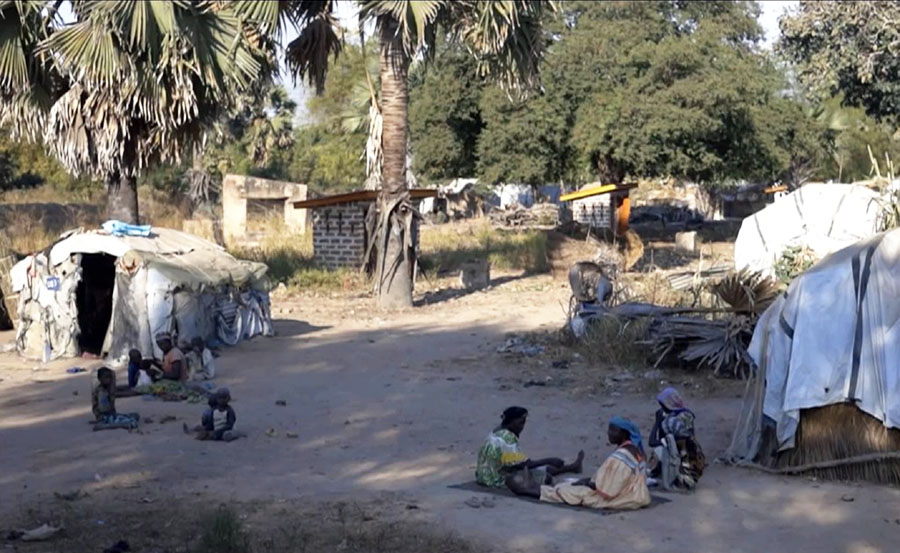
How does the war in Sudan affect neighbouring countries?
Moatinoon
Source: news.un.org
Since April 2023, Sudan has been embroiled in a brutal war between the Sudanese Armed Forces and the Rapid Support Forces, exacerbating existing crises in the country, including political instability and economic hardship.
This conflict has caused a major humanitarian crisis, the consequences of which have affected neighboring countries. Thousands flee Sudan every day, according to the United Nations High Commissioner for Refugees (UNHCR).
The humanitarian crisis in Sudan is the largest in the world. Two out of every three people—30 million people—are in need of assistance, more than 12 million are displaced, and 25 million are suffering from acute hunger, with this number expected to rise.
More than three million refugees
Sudan is experiencing the largest displacement crisis in the world. Filippo Grandi, the UN High Commissioner for Refugees, said in February that "one-third of Sudans population is displaced. The consequences of this horrific and senseless conflict have extended far beyond Sudans borders."
In total, approximately 3.8 million refugees have crossed Sudans borders, creating a major crisis. These refugees are often extremely vulnerable, facing shortages of food, water, and medical care. The United Nations expects this number to rise by nearly one million by 2025.
Countries surrounding Sudan were barely managing displacement before the outbreak of the war in 2023, the latest in a series of conflicts and periods of instability since the Darfur crisis in 2003.
These countries already host large numbers of refugees and internally displaced persons, and their humanitarian programs are severely underfunded. Furthermore, those leaving Sudan are arriving in remote areas, making them difficult to reach.
Chad and Egypt have received the largest number of refugees, with Egypt currently hosting approximately 600,000 Sudanese. In Chad, more than 700,000 refugees are registered. The Chadian government estimates that this number could rise to nearly one million refugees by the end of 2025.
Difficulties in Providing Basic Services
Neighboring countries are struggling to meet the growing demand for healthcare, education, and other essential services. According to the United Nations Office for the Coordination of Humanitarian Affairs (OCHA), this influx has overwhelmed health facilities in Chad, Egypt, Ethiopia, and South Sudan, which are suffering from shortages of medicines, supplies, and medical personnel.
The lack of clarity regarding the level of donor contributions this year has added further uncertainty for those involved. For example, the UNHCR has been forced to suspend all medical treatment services for refugees who have crossed the northern border into Egypt. This has meant the suspension of procedures such as cancer surgeries, heart operations, and medications for chronic diseases, affecting approximately 20,000 patients.
Ideal conditions for the spread of diseases
The World Health Organization warned in 2024 that the situation in Sudan was approaching a "perfect storm," with a barely functioning health system and large numbers of people fleeing to overcrowded areas lacking water, sanitation, food, and basic services.
As expected, the collapse of healthcare infrastructure has led to the spread of diseases, which have crossed borders and impacted neighboring countries hosting large numbers of refugees, who are more vulnerable to preventable diseases due to low vaccination rates in Sudan.
Humanitarian partners have reported increased disease incidence and outbreaks, particularly in border areas and shelters.
Insecurity Worsens
Most of the countries surrounding Sudan, including Libya, Chad, South Sudan, Ethiopia, Eritrea, and the Central African Republic, were already experiencing internal crises before the war, such as internal conflict, hunger, and disease.
The conflict has led to increased violence and instability in border areas, and there have been reports of cross-border fighting.
In Chad, the influx of weapons and the presence of armed groups has reportedly increased violence and insecurity, while a militia in South Sudan has reportedly allied itself with the Rapid Support Forces in Sudan.
Sexual Violence – Scars of Sudans War
Sexual violence is also being used as a weapon in the Sudanese conflict. The harsh reality of this violence, and the fear of falling victim to it, is driving women and girls to leave, facing further risks as they are displaced internally and cross borders in search of safety.
The United Nations Childrens Fund (UNICEF) reported in March that girls often end up in informal displacement sites with scarce resources, where the risk of sexual violence is high. It added that 66 percent of reported child rape victims are girls.
Meanwhile, boys face particular challenges. Amid entrenched stigma, reporting sexual assault is challenging, making it difficult to seek help and access services.
Shockingly, 16 of the survivors were under the age of five, including four one-year-olds.
Economic turmoil and worsening regional poverty
The conflict has disrupted trade routes and economic activities, impacting the livelihoods of people in neighboring countries and exacerbating poverty and economic hardship.
In Ethiopia and Egypt, border restrictions with Sudan and insecurity along trade corridors have increased transportation costs and significantly reduced cross-border economic activity.
In Chad and South Sudan, the massive refugee influx has diverted resources from other vital sectors of the economy.
UN Regional Refugee Response Plan
The 2025 UN Regional Refugee Response Plan prioritizes life-saving assistance and protection, including emergency shelter, transportation from border areas to safer locations, psychosocial support, clean water, healthcare, and education.
Without immediate funding, two-thirds of refugee children will miss out on primary education, threatening an entire generation. Up to 4.8 million refugees and host community members will continue to face severe food insecurity, with at least 1.8 million people deprived of food assistance. Already overburdened health systems could collapse.
Humanitarian partners will require US1.8 billion to support 4.8 million people in the Central African Republic, Chad, Egypt, Ethiopia, Libya, South Sudan, and Uganda. The plan also aims to help host countries strengthen national services and implement programs that contribute to stabilization.

